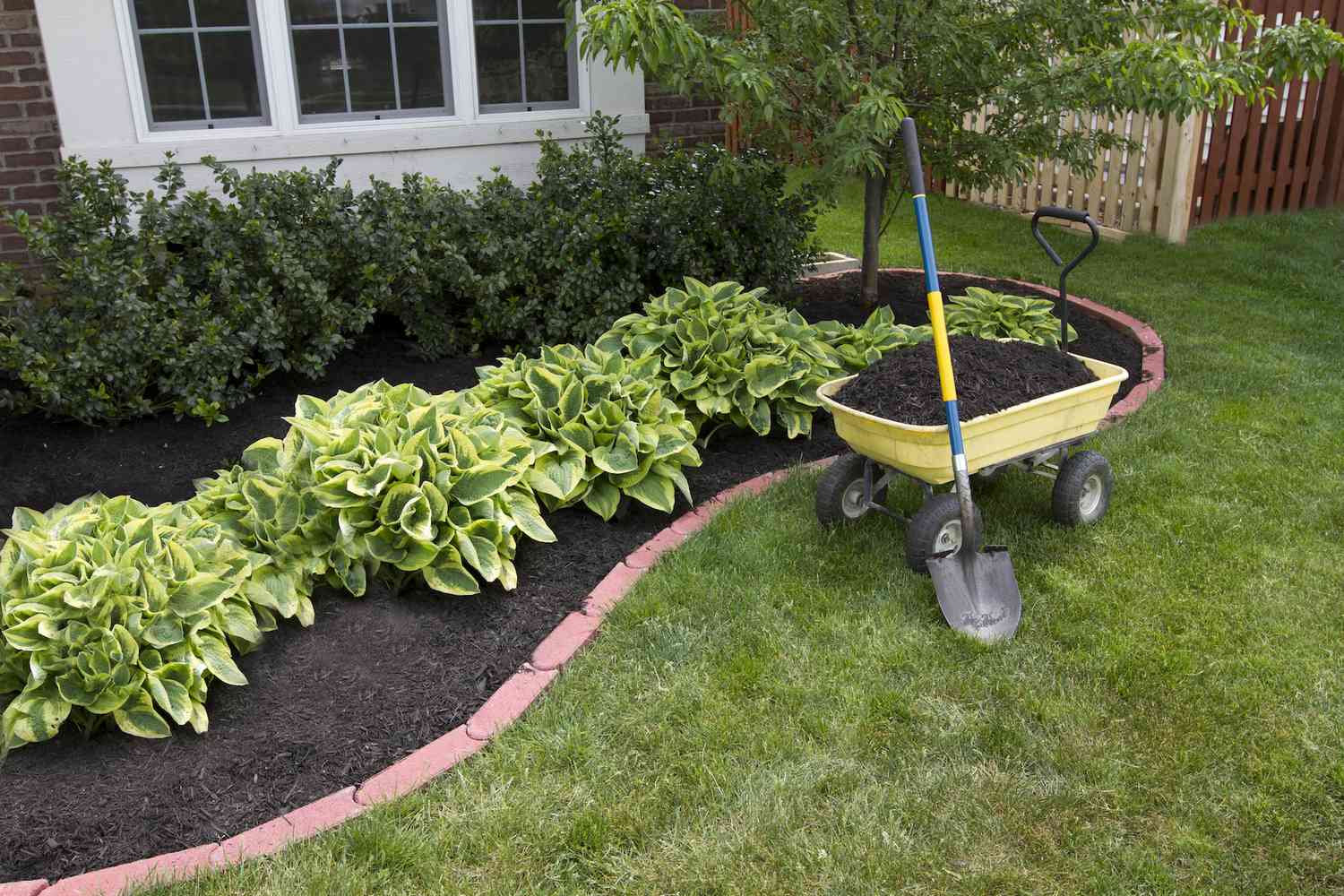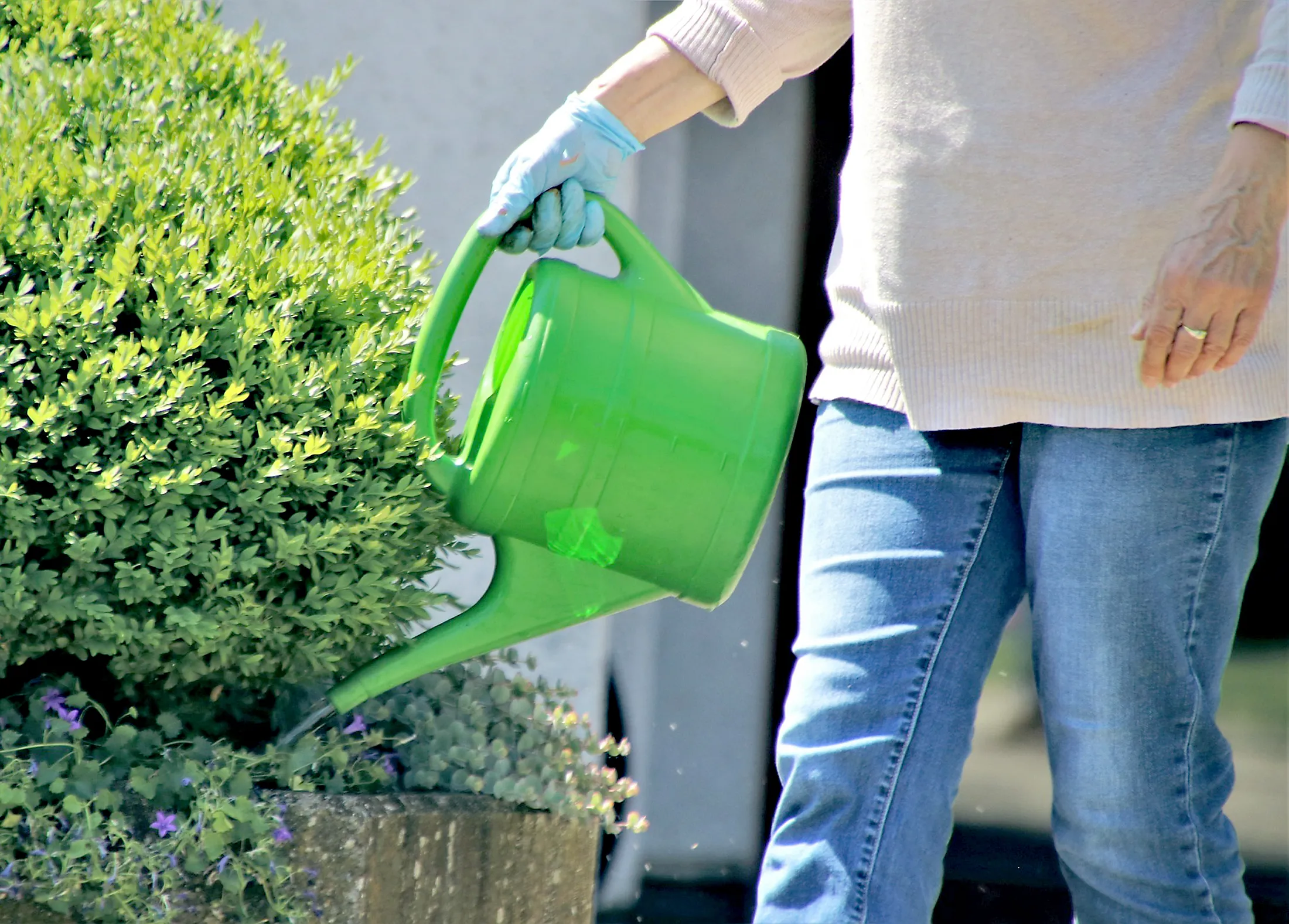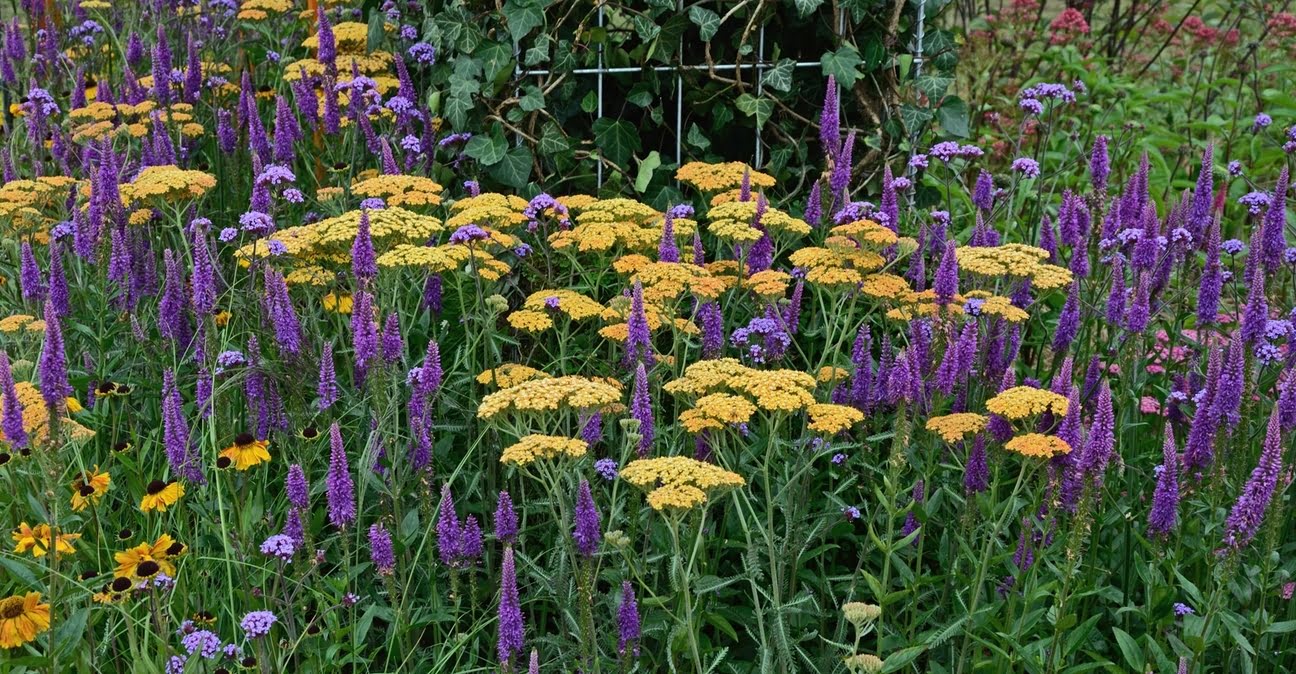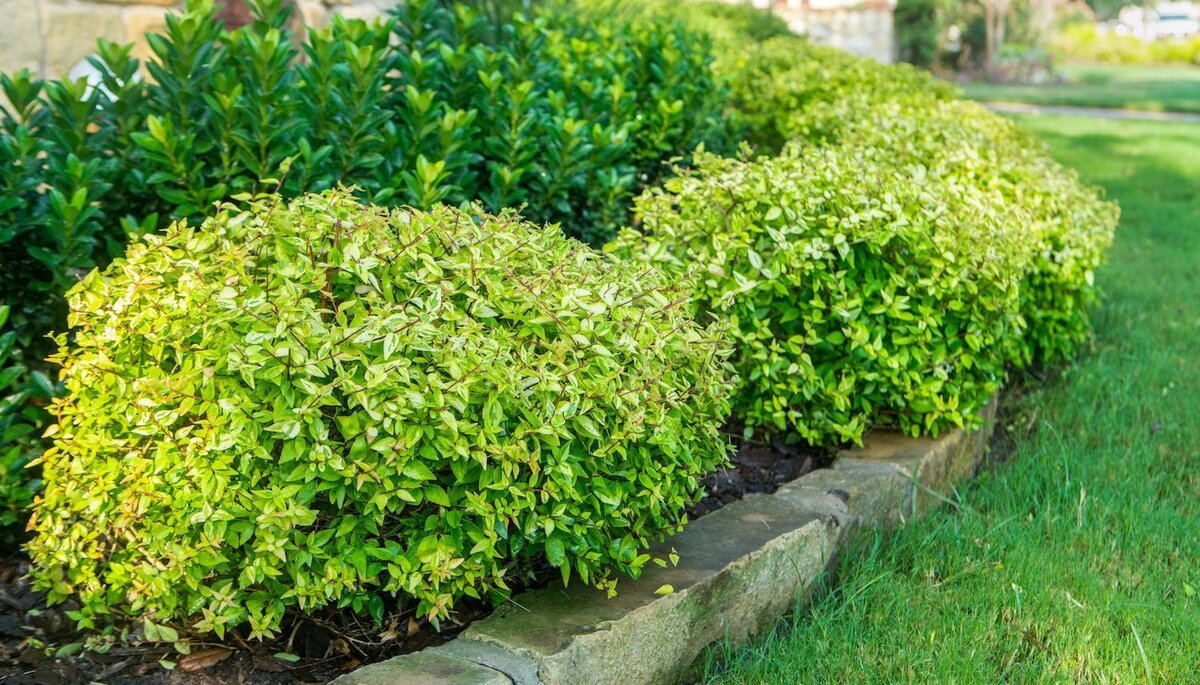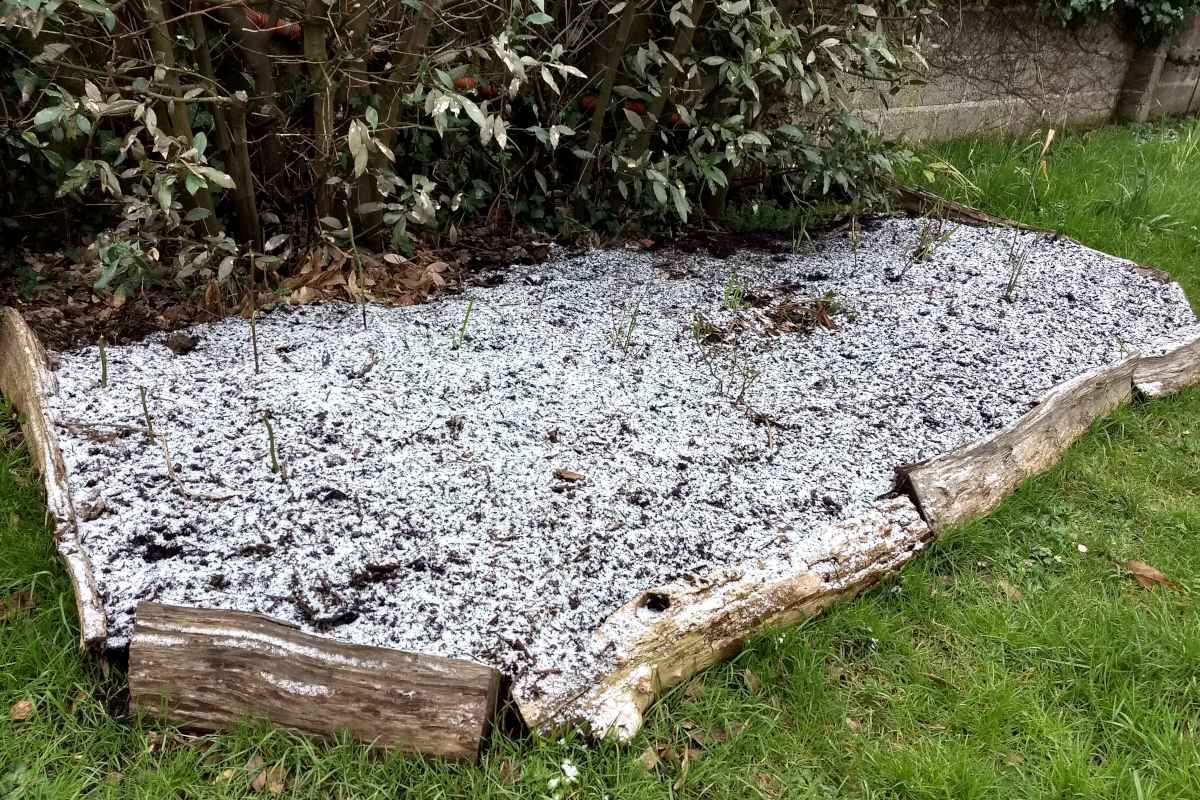Home>Garden Design>Planning Your Garden>What To Plant With Boxwood Shrubs
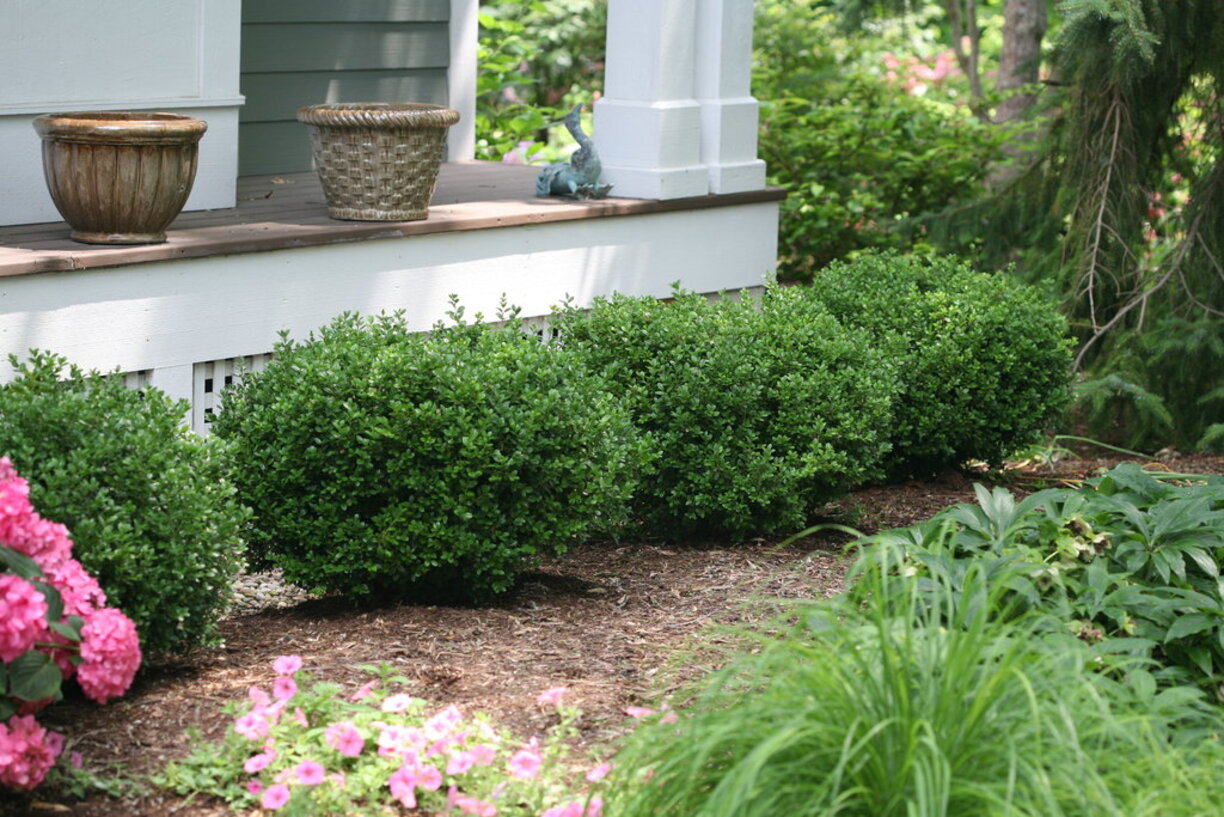

Planning Your Garden
What To Plant With Boxwood Shrubs
Modified: January 22, 2024
Planning your garden? Discover the perfect companions for boxwood shrubs and create a stunning landscape.
(Many of the links in this article redirect to a specific reviewed product. Your purchase of these products through affiliate links helps to generate commission for Chicagolandgardening.com, at no extra cost. Learn more)
Table of Contents
Introduction
Welcome to the wonderful world of gardening! Planning your garden can be an exciting and rewarding experience, and one of the key elements to consider is choosing the right plants to complement each other and create a harmonious landscape. If you have boxwood shrubs in your garden, you’re in luck – they are versatile, evergreen and provide a beautiful backdrop for a wide range of companion plants.
Boxwood shrubs, with their dense foliage and compact growth habit, add structure and elegance to any garden. Whether you have a formal garden or prefer a more relaxed and eclectic style, planting alongside boxwood shrubs can create a visually stunning effect and enhance the overall design of your outdoor space.
When selecting companion plants for boxwood shrubs, it’s important to consider a few factors. Firstly, consider the overall aesthetic you want to achieve. Do you prefer a monochromatic color scheme or a bold and vibrant mix of colors? Additionally, consider the size and growth habit of the boxwood shrubs. Will the companion plants complement or overwhelm them?
Furthermore, take into account the growing conditions of your garden. Does it receive full sun, partial sun, or shade? Is the soil moist or dry? By understanding these factors, you can choose companion plants that thrive in similar conditions and ensure a successful and cohesive garden design.
In this article, we will explore a variety of companion plants that pair well with boxwood shrubs. From flowers and perennials to herbs and vegetables, there are countless options to suit your garden’s preferences and your personal style. So, let’s dive in and discover the perfect plants to complement your boxwood shrubs!
Factors to Consider Before Planting with Boxwood Shrubs
Before diving into the exciting task of choosing companion plants for your boxwood shrubs, it’s essential to consider a few important factors. By taking these factors into account, you can ensure that your garden thrives and that the plants coexist harmoniously.
One factor to consider is the size and growth habit of the boxwood shrubs. Boxwoods come in different varieties, ranging from small and compact to large and sprawling. It’s crucial to choose companion plants that won’t overshadow or overpower the boxwoods. Opt for plants with a similar growth habit or ones that can be pruned easily to maintain a balanced aesthetic.
The second factor to consider is the overall design and style of your garden. Are you aiming for a formal garden with structured lines and symmetry, or a more relaxed and naturalistic look? The choice of companion plants should align with your desired garden style. For a formal garden, consider using plants with a tidy and organized growth habit, while a more eclectic garden may benefit from a mix of textures and colors.
Next, consider the growing conditions of your garden. Boxwoods thrive in well-drained soil and can tolerate both full sun and partial shade. Evaluate the amount of sunlight available in your garden and choose companion plants that share similar light requirements. Additionally, take into account the moisture levels in your soil. Some plants prefer moist soil, while others thrive in drier conditions. Select companions that have similar soil moisture preferences for optimal growth.
An important factor to keep in mind is the compatibility of plants in terms of water and nutrient requirements. Some plants are heavy feeders and require regular fertilization, while others are more low-maintenance. Consider the care and maintenance needs of the companion plants to ensure they can thrive alongside your boxwood shrubs without causing any imbalances in nutrient uptake.
Lastly, think about the purpose and function of your garden. Are you looking to create a peaceful sanctuary, attract pollinators, or grow your own fresh produce? This will influence the selection of companion plants. For a serene garden, choose plants with calming colors and fragrances. To attract pollinators, go for plants with vibrant, nectar-rich flowers. And if you’re interested in growing herbs or vegetables, select companion plants that are beneficial in terms of pest control or flavor enhancement.
By considering these factors, you can ensure that the plants you choose will not only complement your boxwood shrubs aesthetically but also thrive in the same growing conditions. Remember, a well-thought-out garden design that takes into account these factors will result in a beautiful and flourishing outdoor space.
Companion Plants for Boxwood Shrubs
Choosing the right companion plants for your boxwood shrubs can greatly enhance the beauty and visual appeal of your garden. When selecting these plants, consider factors such as color, texture, height, and blooming periods to create an aesthetically pleasing and balanced landscape.
Flowers and perennials are a popular choice for planting alongside boxwood shrubs. They add pops of color and create a vibrant and inviting atmosphere. Some excellent options include:
- Rose bushes: Roses offer an elegant and classic complement to boxwood shrubs. Their wide array of colors and captivating fragrances create a stunning visual and olfactory experience.
- Lavender: This aromatic herb not only adds a touch of purple to your garden but also attracts pollinators. Its delicate blooms and soothing scent provide a tranquil ambiance.
- Salvia: With their vertical spikes of vibrant flowers, salvias provide a striking contrast to the compact foliage of boxwood shrubs. They bloom from early summer to fall, attracting hummingbirds and butterflies.
- Shasta daisies: These cheerful and dainty flowers feature white petals and bright yellow centers. They bloom from late spring to early summer, adding a whimsical touch to your garden.
In addition to flowers and perennials, you can also consider planting annuals and biennials alongside boxwood shrubs. These plants provide seasonal bursts of color and can be easily changed each year. Some popular choices include:
- Marigolds: These vibrant and low-maintenance flowers come in various shades of orange and yellow. Marigolds bloom throughout the summer and are known to repel insects.
- Pansies: With their wide range of colors and charming “faces,” pansies are perfect for adding a splash of color during the cooler months. They thrive in both sun and partial shade.
- Nasturtiums: The bright, edible flowers of nasturtiums come in shades of yellow, orange, and red. These trailing plants bloom all summer long and can add a touch of whimsy to your garden.
- Foxgloves: These tall and majestic biennial plants feature tubular flowers in shades of pink, purple, and white. They provide vertical interest and attract bees and hummingbirds.
Ornamental grasses can also be lovely companions for boxwood shrubs, providing texture and movement in the garden. Consider incorporating grasses such as:
- Fountain grass: This graceful grass produces arching plumes that sway in the breeze. It comes in various colors, including green, bronze, and burgundy, adding a touch of elegance to your garden.
- Miscanthus: With its tall stalks and feathery plumes, miscanthus adds drama and height to the landscape. It comes in different varieties, including zebra grass with unique striped foliage.
- Fescue: This fine-textured grass forms dense clumps and remains green throughout the year. It’s a great option for creating borders or edging around your boxwood shrubs.
- Pampas grass: Known for its tall plumes of fluffy white or pink flowers, pampas grass creates a stunning focal point. However, it is important to note that it can be invasive in some regions.
Groundcovers are another option for companion planting with boxwood shrubs. These low-growing plants can act as a living mulch, suppressing weeds and filling in the gaps between the shrubs. Some popular choices include:
- Creeping juniper: This evergreen groundcover offers excellent coverage and creates a lush carpet of foliage and berries. It can tolerate dry conditions and adds a touch of green to your garden.
- Creeping thyme: This low-growing herb releases a delightful fragrance when stepped on. With its fragrant leaves and tiny colorful flowers, it forms a dense mat and is perfect for filling in spaces.
- Ajuga: Also known as bugleweed, ajuga forms a dense groundcover with attractive foliage in shades of green, purple, or bronze. It produces spikes of vibrant blue, purple, or pink flowers in spring.
- Hosta: These shade-tolerant plants have large, bold leaves that add texture and interest to the garden. Hostas come in various colors and can create a lush and vibrant groundcover.
Lastly, don’t forget to consider herbs and vegetables as companions for your boxwood shrubs. These plants not only provide beauty but also serve a practical purpose. Some suitable options include:
- Thyme: This aromatic herb has tiny leaves and produces small pink or purple flowers. It can be used in culinary applications and releases a pleasant scent when brushed against.
- Basil: With its fragrant leaves and various cultivars, basil is both a culinary herb and an attractive plant. Its vibrant green foliage adds a beautiful contrast to the boxwood shrubs.
- Tomatoes: If you have space available, planting tomato plants near boxwood shrubs can be a winning combination. The vertical growth of the tomato plants complements the compact nature of the boxwood shrubs.
- Chives: These edible herbs produce delicate purple flowers and have slender leaves that add a touch of elegance to your garden. They can be used in cooking and attract pollinators.
By carefully selecting companion plants that complement the size, color, texture, and growing conditions of your boxwood shrubs, you can create a visually stunning and harmonious garden. Choose a combination that reflects your personal style and preferences and provides a delightful environment for both you and your plants to thrive.
Flowers and Perennials
When selecting companion plants for your boxwood shrubs, flowers and perennials can play a vital role in adding color, fragrance, and texture to your garden. These plants not only create a visually stunning display but also attract pollinators, adding a touch of life to your outdoor space.
Rose bushes are a classic choice for planting alongside boxwood shrubs. With their wide variety of colors, shapes, and fragrances, roses offer endless possibilities for creating a beautiful and romantic garden. The combination of vibrant roses with the lush green foliage of boxwood shrubs creates an enchanting and timeless appeal.
Lavender is another excellent option for companion planting. Known for its aromatic leaves and vibrant purple flowers, lavender not only adds color and texture but also releases a calming fragrance that can transform your garden into a soothing oasis. Planting lavender near your boxwood shrubs will create a delightful sensory experience for you and your guests.
If you’re looking for an eye-catching contrast, consider incorporating salvias into your garden design. These plants produce vertical spikes of vibrant flowers in shades of blue, purple, red, and pink. The verticality of salvias pairs well with the dense foliage of boxwood shrubs and creates a beautiful visual contrast. Additionally, salvias are known to attract hummingbirds and butterflies, bringing life and movement to your garden.
For a touch of whimsy and a burst of color, Shasta daisies are a delightful choice. These cheerful flowers feature white petals and bright yellow centers, creating a charming and inviting atmosphere. Blooming from late spring to early summer, Shasta daisies bring a sense of freshness and playfulness to your garden design. Their sturdy stems and long-lasting blooms make them an ideal companion for boxwood shrubs.
Other popular flowering perennials that pair well with boxwood shrubs include coneflowers, daylilies, and phlox. Coneflowers, with their daisy-like blooms in shades of pink, purple, and white, add a vibrant and eclectic touch to your garden. Daylilies come in a range of colors and flower forms, providing continuous blooms throughout the summer. Phlox, with its fragrant flowers in shades of lavender, pink, and white, adds a soft and delicate aesthetic to your garden design.
When selecting flowers and perennials as companion plants for boxwood shrubs, consider the color scheme and size of the blooms. Opt for complementary or contrasting colors to create visual interest. Additionally, choose plants that have a similar growth habit and won’t overpower the boxwood shrubs. With careful consideration and planning, you can create a stunning and cohesive garden design that combines the timeless elegance of boxwood shrubs with the vibrant beauty of flowers and perennials.
Annuals and Biennials
Adding annuals and biennials to your garden can provide bursts of color and variety that complement the evergreen presence of boxwood shrubs. These plants offer the flexibility to change and experiment with different combinations each year, ensuring a fresh and vibrant display.
Marigolds are a popular choice for annual companion planting. With their bold orange and yellow flowers, marigolds bring a cheerful and vibrant aspect to any garden. These hardy plants are low-maintenance and can withstand various growing conditions, making them an ideal choice for planting alongside boxwood shrubs. Additionally, marigolds are known to repel insects, which can benefit the surrounding plants in your garden.
Pansies are another excellent option for annual companions. These charming flowers come in a wide array of colors and patterns, adding a playful and whimsical touch to your garden during the cooler months. Pansies are versatile and can thrive in both sun and partial shade, making them adaptable to various locations within your garden. Their compact growth habit also pairs well with the neat and structured appearance of boxwood shrubs.
Nasturtiums are a favorite choice for their vibrant and eye-catching blooms. These annual plants produce flowers in shades of red, orange, and yellow, creating a visually stunning display. Nasturtiums also have edible leaves and flowers, making them a versatile and decorative addition to your garden. They prefer full sun but can tolerate some shade, making them suitable for planting alongside boxwood shrubs in different light conditions.
Foxgloves are biennial plants that can add height, drama, and a touch of elegance to your garden. With their tall spikes of tubular flowers in shades of pink, purple, and white, foxgloves create a stunning vertical element. These flowers attract bees and hummingbirds and add a sense of enchantment to your garden. Plant them near boxwood shrubs to create a captivating focal point and enhance the overall aesthetic of your outdoor space.
When selecting annuals and biennials for companion planting with boxwood shrubs, consider the blooming periods and growth habits of these plants. Choose annuals that will provide continuous blooms throughout the growing season, ensuring a vibrant and visually appealing garden all year long. Additionally, select plants that have similar sunlight and water requirements as boxwood shrubs to ensure optimal growth and health.
With their versatility and ability to be changed each year, annuals and biennials offer endless opportunities for experimenting with color combinations and creating a dynamic garden design. By carefully selecting these plants to complement boxwood shrubs, you can create a garden that is filled with life and color, providing a delightful sensory experience for you and your visitors.
Ornamental Grasses
Ornamental grasses can be a fantastic addition to your garden when planted alongside boxwood shrubs. These grasses add texture, movement, and a sense of natural beauty to your landscape, creating a visually stunning and dynamic environment.
Fountain grass is a popular choice among gardeners for its graceful and arching form. With its soft, feathery plumes that sway gently in the breeze, fountain grass adds a touch of elegance and whimsy to your garden. It comes in various colors, including green, burgundy, and bronze, allowing you to choose the one that perfectly complements your boxwood shrubs.
Miscanthus is another versatile grass that pairs well with boxwood shrubs. With its tall stalks and beautiful plumes, miscanthus adds drama, height, and texture to your garden. This grass comes in different varieties, including zebra grass, which features unique striped foliage, creating a visually captivating effect.
If you’re looking for a low-maintenance option, fescue grass is an excellent choice. This fine-textured grass forms dense clumps and remains green throughout the year, providing a constant touch of fresh green color. It can be used to create borders or edges around your boxwood shrubs, giving them a well-defined and polished appearance.
Pampas grass is a statement-making option that adds a touch of grandeur to the garden. With its towering plumes of fluffy white or pink flowers, pampas grass creates a stunning focal point and draws attention to your boxwood shrubs. However, it is important to note that pampas grass can be invasive in some regions, so ensure you choose a variety that is appropriate for your area.
When incorporating ornamental grasses into your garden, consider the overall size and shape of your boxwood shrubs. Choose grasses that will complement the size and growth habit of the shrubs without overwhelming them. Additionally, think about the color scheme and texture play. Grasses with contrasting colors and textures can add visual interest and create a harmonious balance with the boxwood foliage.
Keep in mind that ornamental grasses can offer year-round interest and structure to your garden. Even during the winter months when the boxwood shrubs may be dormant, the dried foliage and plumes of grasses can add visual appeal and provide a backdrop for other seasonal elements in your garden.
By incorporating ornamental grasses alongside your boxwood shrubs, you can create a garden that is not only visually captivating but also full of movement and life. These grasses add a natural element to your landscape and create a serene and harmonious environment for you to enjoy.
Groundcovers
Groundcovers are an excellent choice for planting alongside boxwood shrubs, as they can provide a seamless and lush carpet of greenery that complements the structured form of the shrubs. They not only enhance the beauty of your garden but also serve practical purposes such as weed suppression and soil erosion control.
Creeping juniper is a popular evergreen groundcover that pairs well with boxwood shrubs. It forms a dense mat of foliage that creates a visually pleasing contrast with the vertical growth of the shrubs. Creeping juniper also produces berries, adding an additional splash of color to your garden. It is low-maintenance and can tolerate dry conditions, making it a versatile choice for various landscapes.
Creeping thyme is another beautiful and aromatic groundcover to consider. With its fragrant leaves and small colorful flowers, creeping thyme creates a delightful sensory experience when stepped on. It forms a dense mat and is perfect for filling in spaces between boxwood shrubs. Creeping thyme is also drought-tolerant and attracts pollinators, adding both aesthetic and ecological value to your garden.
Ajuga, also known as bugleweed, is a low-growing groundcover with attractive foliage in shades of green, purple, or bronze. It produces spikes of vibrant blue, purple, or pink flowers in spring, creating a stunning display. Ajuga is versatile and can thrive in both sun and shade, making it ideal for areas with varying light conditions. It spreads quickly, filling in spaces between boxwood shrubs, and provides a beautiful backdrop for the shrubs’ dense foliage.
Hosta is a shade-tolerant groundcover that adds lushness, texture, and interest to your garden. With their large, bold leaves in various shades of green and variegated patterns, hostas create a vibrant and vibrant groundcover beneath boxwood shrubs. Hostas are known for their tolerance to different soil conditions and can thrive in moist and shady environments.
When selecting groundcovers for companion planting with boxwood shrubs, pay attention to the growth habit and spread of the plants. Choose groundcovers that will fill in the spaces between the shrubs without overpowering them. Consider the color and texture of the foliage for a visually pleasing combination. Additionally, ensure that the groundcovers have similar light and water requirements as the boxwood shrubs for optimal growth and health.
Groundcovers not only provide a beautiful and continuous carpet of greenery but also offer practical benefits such as weed suppression and erosion control. They help create a cohesive and polished look in your garden while reducing the maintenance required to keep the space looking tidy and well-maintained.
By incorporating groundcovers alongside boxwood shrubs, you can elevate the overall aesthetic of your garden, creating a lush and inviting space that is both visually stunning and functional.
Herbs and Vegetables
Incorporating herbs and vegetables into your garden not only adds beauty and visual interest but also provides the added benefit of fresh and flavorful culinary options. Planting herbs and vegetables alongside boxwood shrubs allows you to create a practical and multi-functional garden space.
Thyme is an excellent herb to plant near boxwood shrubs. With its fragrant leaves and small pink or purple flowers, thyme adds both visual and olfactory appeal to your garden. This versatile herb can be used in a variety of culinary applications and releases a pleasant scent when brushed against.
Basil is another popular herb that pairs well with boxwood shrubs. Known for its fragrant leaves and abundance of culinary uses, basil adds both aesthetic and practical value to your garden. Its vibrant green foliage creates a striking contrast against the deep green of boxwood shrubs and adds a fresh and lively component to your overall garden design.
If you have the space available, consider planting tomatoes near your boxwood shrubs. These flavorful vegetables thrive in full sun and create a vertical element that complements the compact nature of the shrubs. Tomatoes not only offer a bountiful harvest but also add visual interest and variety to your garden.
Chives are another fantastic option for companion planting. These herbs have slender leaves and delicate purple flowers that add a touch of elegance to your garden. Chives can be used in cooking to enhance the flavor of dishes and also attract pollinators, contributing to the overall health and biodiversity of your garden.
When incorporating herbs and vegetables as companions for boxwood shrubs, consider the growing conditions that each plant requires. Ensure that they have similar sunlight and water needs to thrive together. Additionally, take into account the size and growth habit of the herbs and vegetables, selecting varieties that won’t overshadow or compete with the boxwood shrubs.
The combination of ornamental boxwood shrubs with useful herbs and flavorful vegetables creates a garden that is not only visually appealing but also practical and rewarding. You can enjoy the beauty of the shrubs while reaping the benefits of fresh herbs and vegetables to enhance your cooking and culinary experiences.
By incorporating herbs and vegetables alongside your boxwood shrubs, you create a garden that is both aesthetically pleasing and productive, providing a space that nurtures both the soul and the body.
Conclusion
Choosing the right companion plants for your boxwood shrubs can transform your garden into a visually stunning and harmonious oasis. By considering factors such as color, texture, size, and growing conditions, you can create a vibrant and balanced landscape that complements the elegance and structure of the shrubs.
Flowers and perennials offer a wide range of options to add pops of color, fragrance, and visual interest to your garden. Roses, lavender, salvias, and Shasta daisies are just a few examples of the many beautiful flowers that can be planted alongside boxwood shrubs.
Annuals and biennials provide the flexibility to experiment with different combinations each year, ensuring a fresh and vibrant display. Marigolds, pansies, nasturtiums, and foxgloves offer bursts of color and variety that perfectly complement the boxwood shrubs.
Ornamental grasses bring texture, movement, and natural beauty to your garden. Fountain grass, miscanthus, fescue, and pampas grass are just a few options that can enhance the overall aesthetic of your space.
Groundcovers serve both a practical and aesthetic purpose. Creeping juniper, creeping thyme, ajuga, and hosta provide a seamless carpet of greenery that fills in the gaps between boxwood shrubs, reducing maintenance and adding visual appeal.
Incorporating herbs and vegetables alongside your boxwood shrubs not only adds beauty but also provides fresh and flavorful options for your culinary endeavors. Thyme, basil, tomatoes, and chives are just a few examples of the many herbs and vegetables that can complement the shrubs.
Remember, the key to successful companion planting with boxwood shrubs lies in thoughtful planning and consideration of the various factors at play. By selecting plants that harmonize in terms of color, texture, size, and growing conditions, you can create a garden that is not only visually pleasing but also functional and practical.
So, let your creativity and imagination guide you as you embark on the journey of planning your garden with boxwood shrubs. With the right companion plants, you can create a truly breathtaking outdoor space that brings joy, beauty, and a touch of nature to your everyday life.
